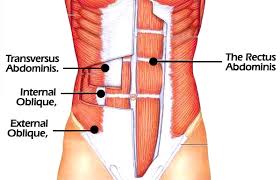 Whenever someone experiences pain in their low back, a phrase often heard is that they need a stronger “core.” The term “core” refers to several muscles primarily in the back/lumbar spine, abdominal region, and pelvis. When looking at the low back specifically, there is less bony stability than in the thoracic spine, which forces our muscles to provide the support needed to protect the low back. Two of the most important muscles in the core that provide this support are the transverse abdominis and the multifidus. These muscles act as a “back brace” (in addition to other core muscles) to help provide adequate spinal stability.
Whenever someone experiences pain in their low back, a phrase often heard is that they need a stronger “core.” The term “core” refers to several muscles primarily in the back/lumbar spine, abdominal region, and pelvis. When looking at the low back specifically, there is less bony stability than in the thoracic spine, which forces our muscles to provide the support needed to protect the low back. Two of the most important muscles in the core that provide this support are the transverse abdominis and the multifidus. These muscles act as a “back brace” (in addition to other core muscles) to help provide adequate spinal stability.
Let’s first take a look at the transverse abdominis:
When looking at the front of the body, the transverse abdominis is your deepest abdominal layer. Its fibers run horizontally, taking on a “corset-like” effect when it contracts. The primary function of this muscle is to provide stability to the lumbar spine and pelvis before movement is occurring in the upper or lower body. Therefore, this is an endurance muscle and should be strengthened appropriately.
- To practice strengthening the transverse abdominis, lay on your back with your knees bent. Place your fingers inside of the bony part of your hip (below naval) and tighten your stomach muscles as if bracing for a punch – you should feel the muscle pop out into your fingers. Practice tightening this muscle as you draw your low back down into the floor. Try to hold for 5 seconds. Repeat 10-20 times.
- Once you are aware of how to appropriately contract this muscle, exercises can be advanced to include more dynamic movements that include the upper and lower body, while maintaining transverse abdominis contraction. This will help mimic every day function and the ability to maintain proper abdominal support during these functions.
Our next article will discuss the second “core” muscle in our back brace, the multifidus, and ways in which we can strengthen to provide increased spinal stability.

